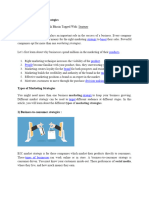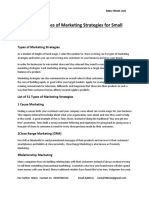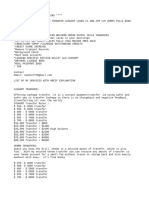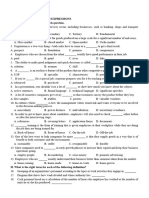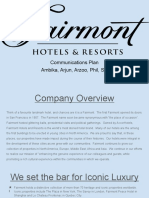0% found this document useful (0 votes)
15 views7 pagesEMS Lecture 2
A promotion strategy is a plan designed to create or increase demand for a product by raising awareness and guiding potential customers through the buying process. It is a crucial component of the broader marketing strategy, which encompasses the marketing mix of product, price, place, and promotion. Effective promotion strategies target customers at different stages of the marketing funnel, utilizing various tactics such as paid advertising, content marketing, sponsorships, and special deals to drive engagement and sales.
Uploaded by
buleticchonnaCopyright
© © All Rights Reserved
We take content rights seriously. If you suspect this is your content, claim it here.
Available Formats
Download as DOCX, PDF, TXT or read online on Scribd
0% found this document useful (0 votes)
15 views7 pagesEMS Lecture 2
A promotion strategy is a plan designed to create or increase demand for a product by raising awareness and guiding potential customers through the buying process. It is a crucial component of the broader marketing strategy, which encompasses the marketing mix of product, price, place, and promotion. Effective promotion strategies target customers at different stages of the marketing funnel, utilizing various tactics such as paid advertising, content marketing, sponsorships, and special deals to drive engagement and sales.
Uploaded by
buleticchonnaCopyright
© © All Rights Reserved
We take content rights seriously. If you suspect this is your content, claim it here.
Available Formats
Download as DOCX, PDF, TXT or read online on Scribd
/ 7



















